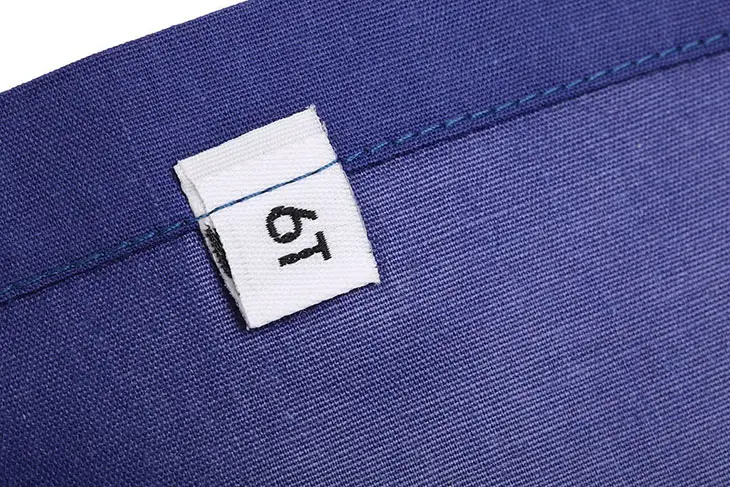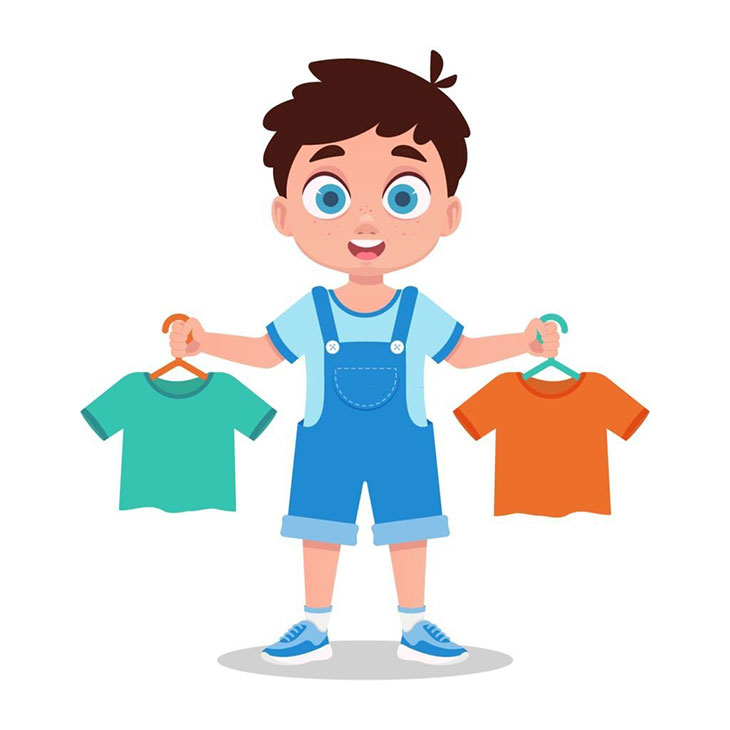Are you a parent or caregiver trying to navigate the world of toddler clothing sizes?
If your little one has outgrown their 6T (toddler) clothes, you might be wondering what size to buy next. So what size comes after 6T?
I will demystify the sizing progression and shed light on the size that typically follows 6T, helping you find the perfect fit for your growing child.
What Size Comes After 6T?

In children’s sizing, the size that typically comes after 6T is 7T. Clothing sizes for kids often follow a sequential pattern, with “T” representing the toddler stage.
The “T” sizing is commonly used for children aged 2 to 4 years, denoting toddler-specific proportions. Once a child outgrows the 6T size age, they would typically progress to the next size up, 7T.
It’s important to note that sizing can vary slightly between different clothing brands and countries.
Hence, it’s always advisable to check the specific size charts manufacturers provide to ensure the best fit for your child.
Differences Between The 6T Vs. 6X Vs. 6
For girls experiencing their 6-year growth spurt, 6X is typically a little larger than size 6.
Sizes 6X and 6 are primarily used for girls’ apparel, although size 6 is appropriate for both girls and boys.
The idea that 6X is a half size between the 6 and 7 sizes for girls might make it simple to understand the difference between 6X and 6 sizes.
The fact that size 6 is typically offered at most retailers is another distinction between average sizes 6 and 6X, 6T, and other sizes. In contrast, just a few children’s apparel companies carry sizes 6X and 6T.
6T differs from both 6X and 6. Toddler sizes are designed to fit less developed children who frequently wear diapers or are still learning how to dress themselves.
Compared to 6T, sizes 6X and 6 have additional zippers, buttons, and snaps.
The 6T size age will typically fit a little shorter and looser, with bottoms that are simpler to take off if the baby wears diapers. Only a few retailers, including Old Navy, carry 6T.
When Should You Get Bigger Clothes For Your Kids?

Kids must have comfortable, correctly fitting clothing. They desire to move around and explore as kids.
Uncomfortable clothing could prevent them from engaging in this behavior and gradually make them timid and uneasy.
Several indicators can alert a parent that their child may need to wear larger clothing.
First, blouses and shirts roll up easily when they get too small. It could be time to buy larger clothing if you notice this.
Pants, for example, would be more challenging to zip up and would also feel tighter about the groin.
Some parents purposely order one or two sizes bigger than their child’s needs. As a result, they don’t need to buy new clothes for the children as frequently.
This is okay as long as the clothing is not so large that it restricts movement. Also, pay close attention to kids with clothing sensory issues.
Larger clothing may be hazardous (e.g., baggy pants may provide tripping hazards, larger shirts may easily become hooked on objects, etc.).
Kids grow by leaps and bounds, so you should check their size frequently, be it for clothes or shoes.
For example, I have to measure the shoe sizes for my 10-year-old boy again every 6 months.
How To Take Accurate Measure Of Your Kids
Follow my guide, and you will know the method to take precise measurements of the kids, from height, chest, and waist to other figures.
Height
Having your child stand up straight when taking their height is crucial. Asking them to lean against a door frame or a door is a simple and quick way to persuade them to stand up straight.
Mark off the child’s head when you finally position them against a flat surface, then calculate how far it is to the floor from that mark.
Comparatively speaking, this would be simpler than measuring an active child from head to foot.
Chest
Wrap the measuring tape around your kid’s chest under their arms to take their chest measurements.
When measuring their child’s chest, some parents instruct their children to lift their arms; however, it is preferable if the arms are relaxed.
Some chest muscles may stiffen when the arms are raised at the sides. This implies that measuring with the arms raised versus relaxed at the sides may result in slight size differences.
Waist
Starting at the top of the kid’s hip bone, wrap the measuring tape around your waist size many times.
Your child’s belly button should be level with the measuring tape. Your youngster needs to be breathing normally at all times.
Some children hold their breath while having their waist measurements taken, which could impact the outcomes.
You should read the measurements immediately following your child’s exhalation after ensuring the measuring tape isn’t too loose or tight.
Other Measurements
Certain garments may require additional measurements besides height, chest, and waist. Here are a few other measurements to consider.
- Hip Measurements: Measure the fullest part of your child’s hips, typically around the hip bones.
- Inseam Measurements: For pants and shorts, measure the inside leg length from the crotch to the desired hemline.
- Sleeve Length Measurements: Measure from the shoulder joint to the desired sleeve length.
- Neck Measurements: Measure around the base of your child’s neck for collared shirts or dresses.
Frequently Asked Questions

What Size Does A 7-Year-Old Boy Wear?
As a general guideline, most 7-year-old boys wear standard clothing sizes ranging from 7 to 8 or sometimes even 6X.
It is advisable to refer to the specific brand’s kids clothing size charts and consider the child’s accurate measurements to ensure the best fit for their clothing.
Is 6T The Same As XS?
No, 6T is not the same as XS. 6T is a size typically used for toddler clothing, specifically designed for children aged 2 to 4 years.
On the other hand, XS (Extra Small) is used in standard toddler sizing for older children and adults.
What Is The Difference Between Size 5T And 6?
The main difference between size 5T and size 6 is the age range they typically correspond to.
Size 5T is generally designed for toddlers aged 5 years, while size 6 is intended for children around 6 years old.
In terms of clothing proportions, size 6 may provide a slightly more streamlined fit than size 5T, as it is intended for children who have moved past the toddler stage.
The Bottom Line
What size comes after 6T? After 6T, the next size typically in line is 7T.
Remember to measure the actual size of your kid first and consult the specific brand regular sizing chart for the best fit.
Enjoy finding the perfect toddler clothes for your little one as they grow and thrive!
